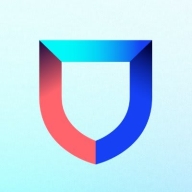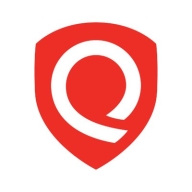


Lacework FortiCNAPP and Qualys CyberSecurity Asset Management compete in the cybersecurity management category. Lacework has an edge with its pricing and support, while Qualys excels in features, making its higher cost worthwhile.
Features: Lacework FortiCNAPP offers ease of use, machine learning anomaly detection, and comprehensive compliance reports, streamlining data ingestion and alert management. It provides actionable context for anomalies. Qualys CyberSecurity Asset Management excels in dynamic asset tagging and detailed inventory management, offering robust compliance support and efficient vulnerability management across multiple frameworks, delivering a comprehensive view of asset risks.
Room for Improvement: Lacework could enhance IAM security controls, data visibility, and third-party integrations. Improvements in alert configuration and FedRAMP moderate authorization support are needed. Qualys CSAM needs enhanced tagging, dynamic rules, and more intuitive UIs. Its reporting, integration options, and user experience also require improvements for a smoother experience.
Ease of Deployment and Customer Service: Lacework deploys widely in public and private clouds, offering proactive customer support. Qualys is available on hybrid and public clouds, providing strong technical support but needing improvement in seamless integration. Lacework excels with community engagement and rapid response, while Qualys tends toward minimal interaction post-integration.
Pricing and ROI: Lacework offers competitive pricing and clear ROI by automating tasks and reducing manual monitoring labor. Its flexible pricing adapts to customer needs. Qualys, while competitively priced, may pose affordability issues for smaller organizations, offering extensive features in a single tool but potentially costly without bundling options.
| Product | Market Share (%) |
|---|---|
| Qualys CyberSecurity Asset Management | 1.2% |
| Zafran Security | 1.0% |
| Lacework FortiCNAPP | 1.3% |
| Other | 96.5% |



| Company Size | Count |
|---|---|
| Small Business | 4 |
| Midsize Enterprise | 4 |
| Large Enterprise | 4 |
| Company Size | Count |
|---|---|
| Small Business | 6 |
| Midsize Enterprise | 2 |
| Large Enterprise | 23 |
Zafran Security integrates with existing security tools to identify and mitigate vulnerabilities effectively, proving that most critical vulnerabilities are not exploitable, optimizing threat management.
Zafran Security introduces an innovative operating model for managing security threats and vulnerabilities. By leveraging the threat exposure management platform, it pinpoints and prioritizes exploitable vulnerabilities, reducing risk through immediate remediation. This platform enhances your hybrid cloud security by normalizing vulnerability signals and integrating specific IT context data, such as CVE runtime presence and internet asset reachability, into its analysis. No longer reliant on patch windows, Zafran Security allows you to manage risks actively.
What are the key features of Zafran Security?
What benefits can users expect from Zafran Security?
In industries where security is paramount, such as finance and healthcare, Zafran Security provides invaluable protection by ensuring that only exploitable vulnerabilities are addressed. It allows entities to maintain robust security measures while allocating resources efficiently, fitting seamlessly into existing security strategies.
Lacework FortiCNAPP provides robust cloud security, combining vulnerability management and multi-cloud insight with user-friendly controls, machine learning detection, and compliance support.
Lacework FortiCNAPP specializes in cloud security by merging machine learning anomaly detection with agent-based vulnerability management to offer detailed alerts and compliance reports. Its comprehensive approach allows continuous monitoring across AWS and Kubernetes, providing insights from an attacker's perspective. The platform offers automation and seamless Slack integration, facilitating collaborative and efficient cloud security management. Users value its ability to handle multi-cloud environments and scan IAC scripts, configurations, and compute nodes across AWS and GCP.
What are the key features?Organizations across sectors leverage Lacework FortiCNAPP for cloud security, focusing on compliance, security posture, and vulnerability management. It is widely used for monitoring AWS and Kubernetes environments, scanning IAC scripts, configurations, and securing compute nodes. It supports multi-cloud security posture management and log ingestion, enabling companies to maintain strong cloud infrastructures without dedicated security layers.
Qualys CyberSecurity Asset Management provides advanced real-time asset visibility, dynamic tagging, and External Attack Surface Management. It streamlines asset discovery and management using cloud agents and IP-based scanning, enhancing risk management and software lifecycle tracking.
Qualys CyberSecurity Asset Management offers a comprehensive solution for managing asset inventories and tracking software lifecycle states. It facilitates network visibility and supports zero-day vulnerability solutions, enhancing security posture through efficient monitoring. Users benefit from its cloud-based interface, which provides in-depth asset configurations and insights. Key features include automated vulnerability scanning and unauthorized software management, reducing manual efforts. The platform also emphasizes the importance of timely remediation and ongoing risk mitigation across multiple environments. Despite its strengths, users note the need for enhanced integration with additional CMDBs beyond ServiceNow, as well as cost efficiency improvements. Requests also include better report customization, more scan control, and a simplified UI.
What are the key features of Qualys CyberSecurity Asset Management?In industries like finance, healthcare, and manufacturing, Qualys CyberSecurity Asset Management enhances asset control by offering visibility into hardware and software configurations. It aids in maintaining security compliance and identifying unauthorized software, crucial for sectors with strict regulatory requirements.
We monitor all Vulnerability Management reviews to prevent fraudulent reviews and keep review quality high. We do not post reviews by company employees or direct competitors. We validate each review for authenticity via cross-reference with LinkedIn, and personal follow-up with the reviewer when necessary.